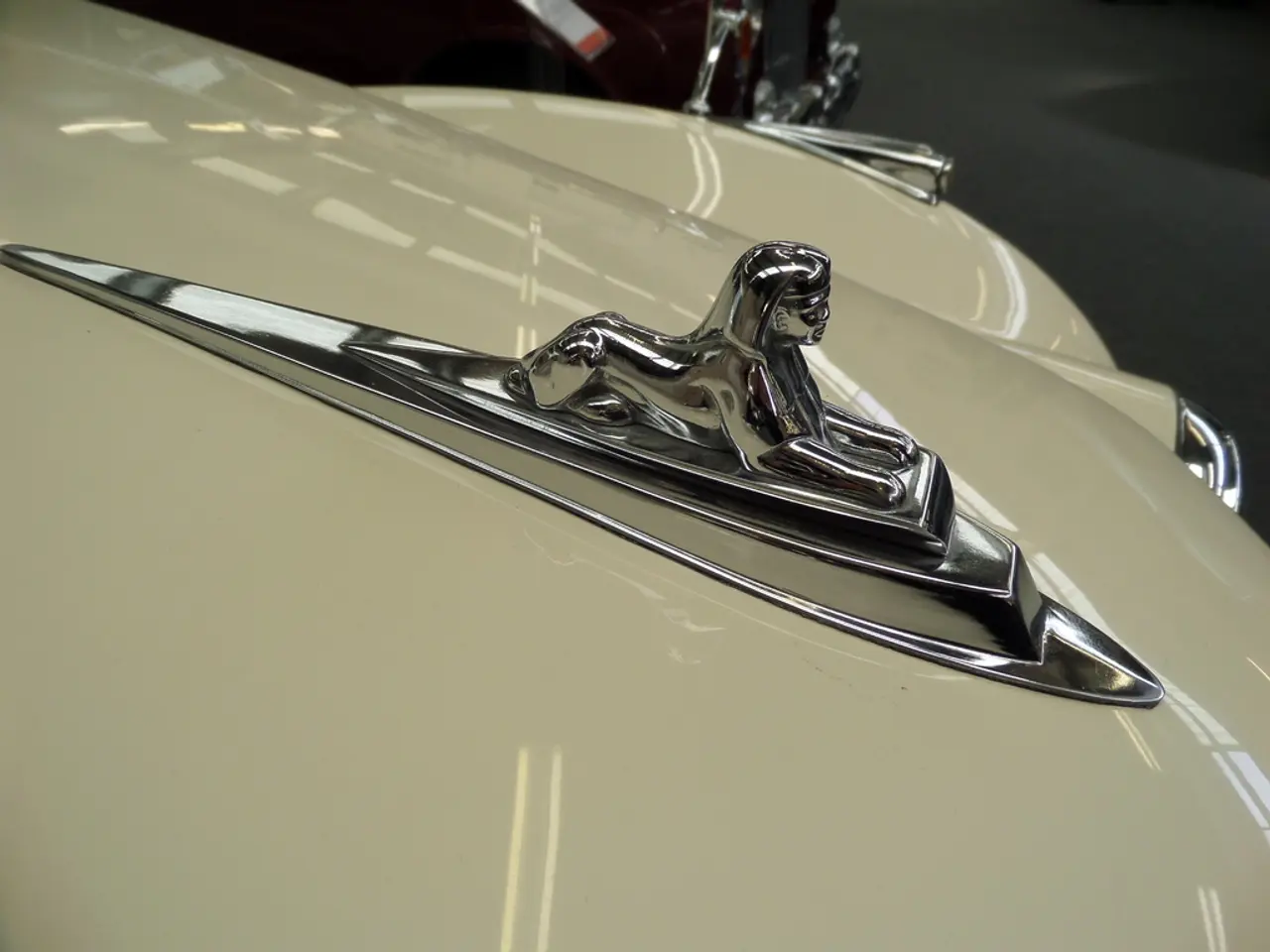BMW's emblem holds a deeper significance, and now, the public is becoming increasingly aware of its true symbolism.
The iconic BMW logo, with its blue and white circular design, is a familiar sight on the roads today. However, a common misconception persists that the logo represents a spinning aircraft propeller. In reality, the BMW logo is deeply rooted in Bavarian history and culture.
BMW, hailing from Bavaria, Germany, adopted its logo from the RAPP Motor Company, whose emblem it modified to reflect its regional origins. The blue and white colours of the logo are a direct reference to the Bavarian flag, symbolising the company's ties to its homeland [1][4].
The circular shape of the logo has remained consistent throughout BMW's history, serving as a testament to its unwavering commitment to its heritage. This regional symbolism was not uncommon in the car industry during BMW's early years [1][5].
The propeller association with the BMW logo can be traced back to BMW's advertising campaigns in the first half of the 20th century. In an attempt to capitalise on its aircraft engine manufacturing past, BMW placed its brand logo over spinning propellers in advertisements, fostering the belief that the logo was a propeller [2][3].
However, it's essential to clarify that the propeller interpretation is a myth, and the logo's design is based on the Bavarian flag's pattern. BMW has made it clear that the propeller association is not part of the original design or history [1][4].
In recent times, a viral TikTok video has helped to clarify the origins of the BMW logo, shedding light on the misunderstanding and setting the record straight.
Other automotive logos, such as Alfa Romeo's man-eating snake and Porsche's black horse, also draw inspiration from their respective cities' coats of arms. These designs reflect a similar commitment to heritage and regional identity [6][7].
BMW's journey from aircraft engine manufacturer to automobile powerhouse is a fascinating one, marked by a rich history and a deep connection to its roots. Understanding the true origins of the BMW logo helps us appreciate this connection and the company's dedication to its Bavarian heritage.
[1] History.com Editors. (2010). BMW. A&E Television Networks, LLC. [2] The BMW Group. (n.d.). The BMW logo. Retrieved from https://www.bmwgroup.com/en/company/history/the-bmw-logo.html [3] The BMW Group. (n.d.). BMW Group History. Retrieved from https://www.bmwgroup.com/en/company/history.html [4] The BMW Group. (n.d.). BMW Group in Bavaria. Retrieved from https://www.bmwgroup.com/en/company/history/bmw-group-in-bavaria.html [5] The BMW Group. (n.d.). The BMW Group in Munich. Retrieved from https://www.bmwgroup.com/en/company/history/the-bmw-group-in-munich.html [6] Alfa Romeo. (n.d.). History. Retrieved from https://www.alfaromeo.com/en-gb/history [7] Porsche AG. (n.d.). History. Retrieved from https://www.porsche.com/uk/aboutporsche/history/
- The creative redesign of the RAPP Motor Company's emblem, resulting in the BMW logo, displays a strong connection to Bavarian history and culture, as shown by the logo's blue and white colors that mirror the Bavarian flag.
- The 3D circular shape of the BMW logo has remained consistent since its inception, symbolizing the company's unwavering commitment to its heritage and regional identity.
- In the early years of the car industry, regional symbolism was not uncommon, with BMW being one of the automotive companies that drew inspiration from its homeland's coats of arms, like Alfa Romeo and Porsche.
- BMW's dedication to branding roots can also be seen in the UI and UX layout of its social-media platforms and entertainment channels, ensuring a cohesive lifestyle experience for its audience.
- The iconic logo, with its unique design, is an essential part of the technology-driven automotive industry today, serving as a reminders of the brand's heritage and commitment to creativity and innovation.
- Artistic design elements like the BMW logo have inspired numerous fan creations, from digital art to sculptures, reflecting the powerful impact of branding on popular culture.
- The BMW brand, originally from Bavaria, has transcended the car industry, branching out into various sectors like entertainment, technology, and lifestyle, demonstrating its ability to stay relevant and evolve with the times.
- In the realm of entertainment, movies and TV shows often feature cars with recognizable logos, such as the BMW, playing an essential role in setting the mood and atmosphere, further reinforcing the impact of branding on our daily lives.




